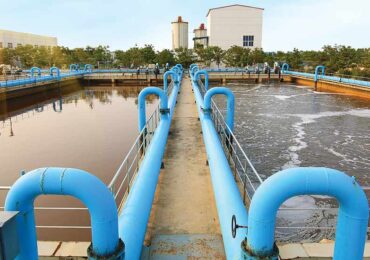What’s inside
This document provides a basic introduction to the value of information provided by ATP monitoring in wastewater treatment. This includes the various quantities that are determined and how they can be put to use as key process indicators and invaluable additions to your overall control strategy.
What are bioreactors?
Bioreactors harness the ability of naturally-occurring microorganisms to break down environmental contaminants discharged from cities and industries. Because they are the engine driving the process, it is critical to closely monitor the quantity and quality of these microorganisms.

Mixed Liquor Suspended Solids (MLSS) and Mixed Liquor Volatile Suspended Solids (MLVSS) measurements measure more than living biomass. LuminUltra’s Cellular ATP (cATP) measurement determines biomass energy, which is easily converted to dry biomass weight. Independent research has shown that, on average, a biomass population contains 250 parts of biomass carbon per 1 part of intracellular ATP and that biomass is approximately 50% carbon on a dry basis. These factors can be combined to achieve the following conversion for Active Volatile Suspended Solids (AVSS):
AVSS (mg/L) = 0.5 × cATP (ng / mL)
The AVSS can be considered to be a direct indication of living biomass concentration. Having this parameter, along with the conventional MLSS measurement, facilitates the computation of a new control parameter, the Active Biomass Ratio (ABR):
ABR (%) = AVSS (mg/L) / TSS (mg/L)
Independent research has shown that the fraction of living biomass contained in the total suspended solids of a bioreactor is generally in the vicinity of 15 to 40 percent but is highly variable depending on bioreactor conditions, substrate characteristics, and the presence of toxins. The following diagram depicts the average ABR for many measurements in different aerobic bioreactors treating wastewaters from different industries.
The variability of the ABR demonstrates the insensitivity of the MLSS as an indicator of living biomass concentration and suggests that opportunities for improvement exist in most facilities. In fact, a wide range of opportunities present themselves by having the ability to easily and directly measure living biomass quantity, such as the ability to:
- Manage bioreactor inventory level
- Inprove biosolids settalibility
- Detect influent wastewater toxicity
- Monitor biomass in effluent
- Balance bioreactor throughputs
- Identify the source of process upsets
- Determine disinfection efficacy
With the ability to measure living biomass directly and without interference, wastewater treatment operators can unlock the potential of their bioreactor through the use of LuminUltra’s QG21W test kits.










